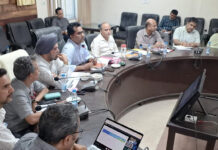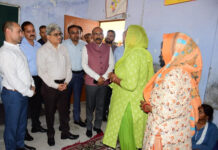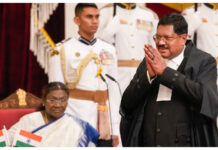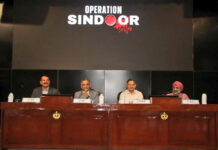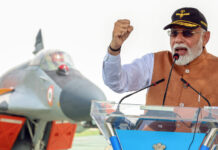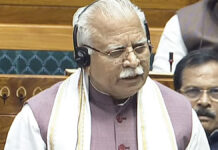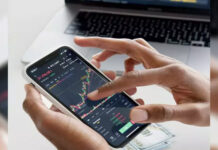Lt Gen Pradeep Bali (Retd)
THE recent counter-insurgency (CI) operation in Rajouri district of Jammu and Kashmir has again brought into stark relief the heavy price being paid in terms of casualties suffered while neutralising insurgents and Pakistani terrorists being pushed across the border. While insurgency has been waxing and waning in the past few years, the death toll of the security forces, primarily the Army, is a cause for concern. A repetitive pattern of fatal encounters keeps emerging, even as there are many indicators of a return to normalcy in this troubled region.
It is the Rashtriya Rifles (RR) and Special Forces which have to do most of the heavy lifting in such operations, though the local police have also been active in tracking down militants. The RR, though categorised as a paramilitary force, is officered and populated entirely by Army personnel, with the major composition being from the infantry. Even officers and troops from other arms, seconded to the RR, operate like the infantry, as this is how CI operations are prosecuted. Army personnel who are posted to this force for a two- or three-year tenure are the cream of the organisation, with a stringent set of qualitative requirements laid down for selection to serve in the RR.
The ultimate sacrifice made by any soldier in combat, irrespective of rank, is a high cost to pay, and when the bravehearts who go down fighting are of the officer rank, the price being paid is much steeper. Young officers, arduously selected and trained, are the flower of any uniformed force, be it the regular army or the RR, and they are the ones who provide the leadership at the cutting edge. The Indian Army is an officer-led force and the casualty ratio of officers, whose number is much smaller, is disproportionately high. In fact, it is the highest in comparison to any active army in the world. While the fatalities in the Kalakote encounter included two young Captains, a Commanding Officer of Colonel rank, a Major and a DSP were killed in an encounter at Kokernag in south Kashmir in September. Recurring casualties among our officers and troops often lead to apprehensions about the modus operandi and training of our forces, even among military veterans who may not be familiar with CI operations. However, what needs to be understood is the operating environment for our CI forces. Images of US and Israeli forces in action against militants and terrorists may give a flawed perception about the type of combat our forces have to fight. It is one thing to operate with impunity against perceived enemies in Iraq and Afghanistan, or even Gaza, and quite another to counter inimical elements, even from across the border, in your own land. Militants operating in our hinterland can do so due to a well spread-out support base among the local populace. In this disaffected lot, while the active over-ground workers may be identified, a large number of sympathisers for the terrorists’ cause enjoy relative anonymity. The militants merged in the local demography are not easy to identify, while any uniformed individual of the security forces has a distinct and highly visible identity. The locals, willingly or otherwise, become a shield for the militants, who can move about and indulge in their nefarious activities without fear of immediate detection. The major factor while operating among our own citizens is the binding restriction of preventing any collateral damage, even at the high cost that the security forces may have to pay. Unlike counter-terrorist operations on foreign and distant lands, there cannot be any indiscriminate action against the locals based on mere suspicion and no use of disproportionate force. In such a milieu, the security personnel are akin to a boxer with one hand tied behind his back and his vision partially blurred as the target is well hidden among the local population. CI operations are generally referred to as low-intensity conflict, primarily due to the use of smaller calibre weapons and localised extent of operations. However, at the point of contact, there is nothing low intensity about it, with the combat troops subjected to pinpoint fire from state-of-the-art weapons, with which our adversary equips these ideologically fanaticised militants, some of whom are well-trained former Pakistani soldiers. They also possess explosive devices that can knock out large-sized vehicles. Another term apt to be misinterpreted is intelligence that may be available for such operations. The security forces, at best, have to depend upon information of varying credibility for planning. At the tactical level, time is at a premium as there is no entrenched enemy but a highly mobile foe who has a good feel of the area and inputs about the likely movement of troops in its pursuit.
There is often a mention of avoidable risks, an unholy hurry and a hint of brashness among our young officers involved in an encounter. In such actions, based many times on scanty inputs, speed is of the essence. Any soldier worth his salt does not have the time to reflect on brashness versus bravado. With the rush of adrenaline, he just wants to close in on the enemy or terrorist and eliminate this threat to his motherland — it’s as simple as that.
There are people who feel that if terrorism is kept below a threshold long enough, it will die its own death. It has taken over three decades and unrelenting efforts by the Army, paramilitary and police to curb this scourge. It is a cancer which will again spread like a multi-headed hydra if not checked constantly by active measures. The cost we pay for this as a nation is indeed heart-wrenching — the loss of our bravest soldiers.
Ultimately, the solution lies in the domain of the political executive.


